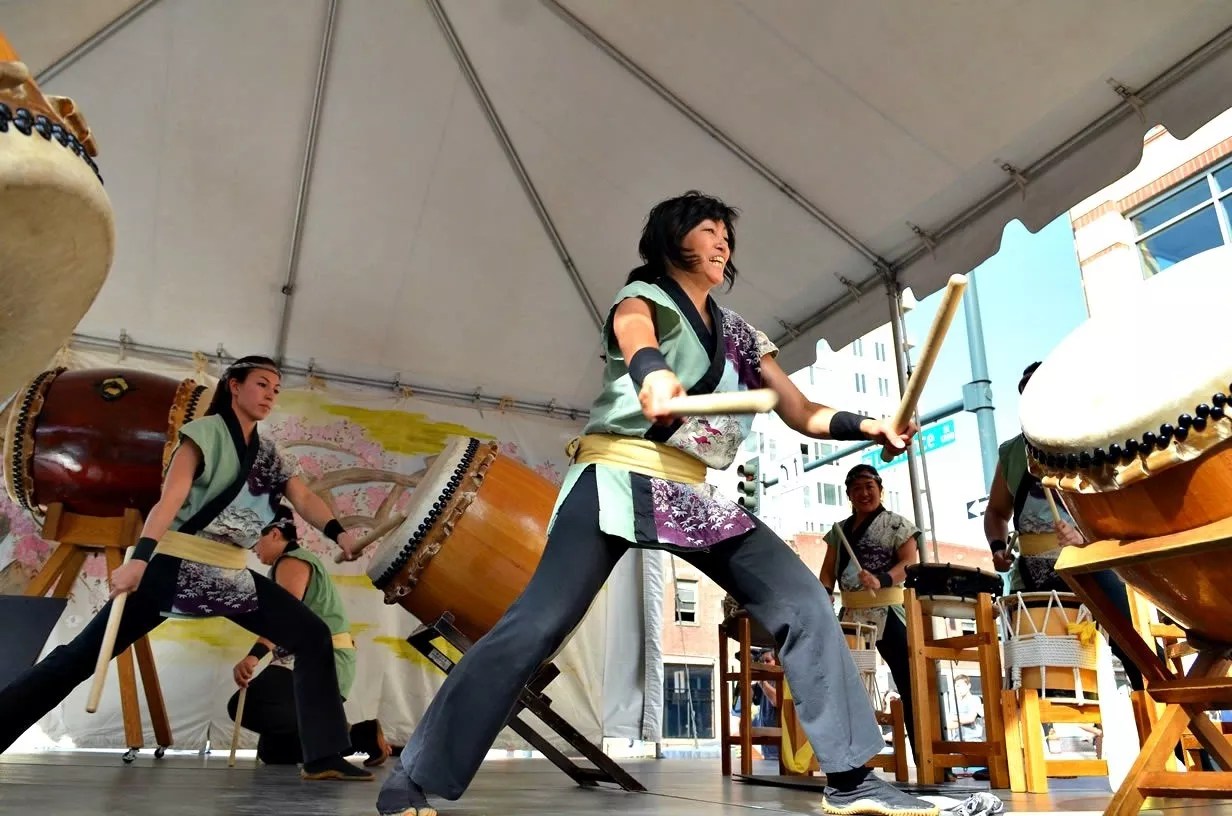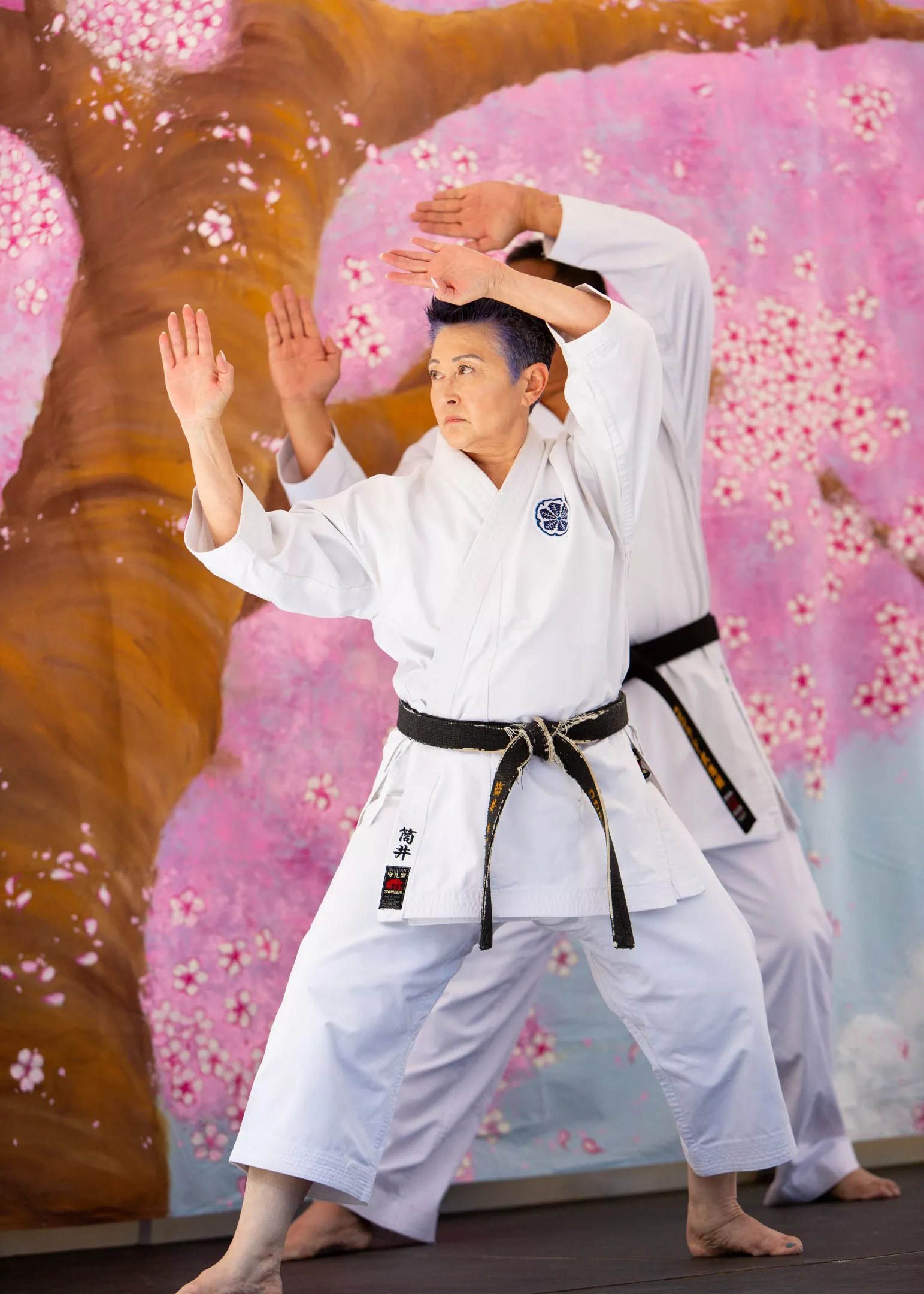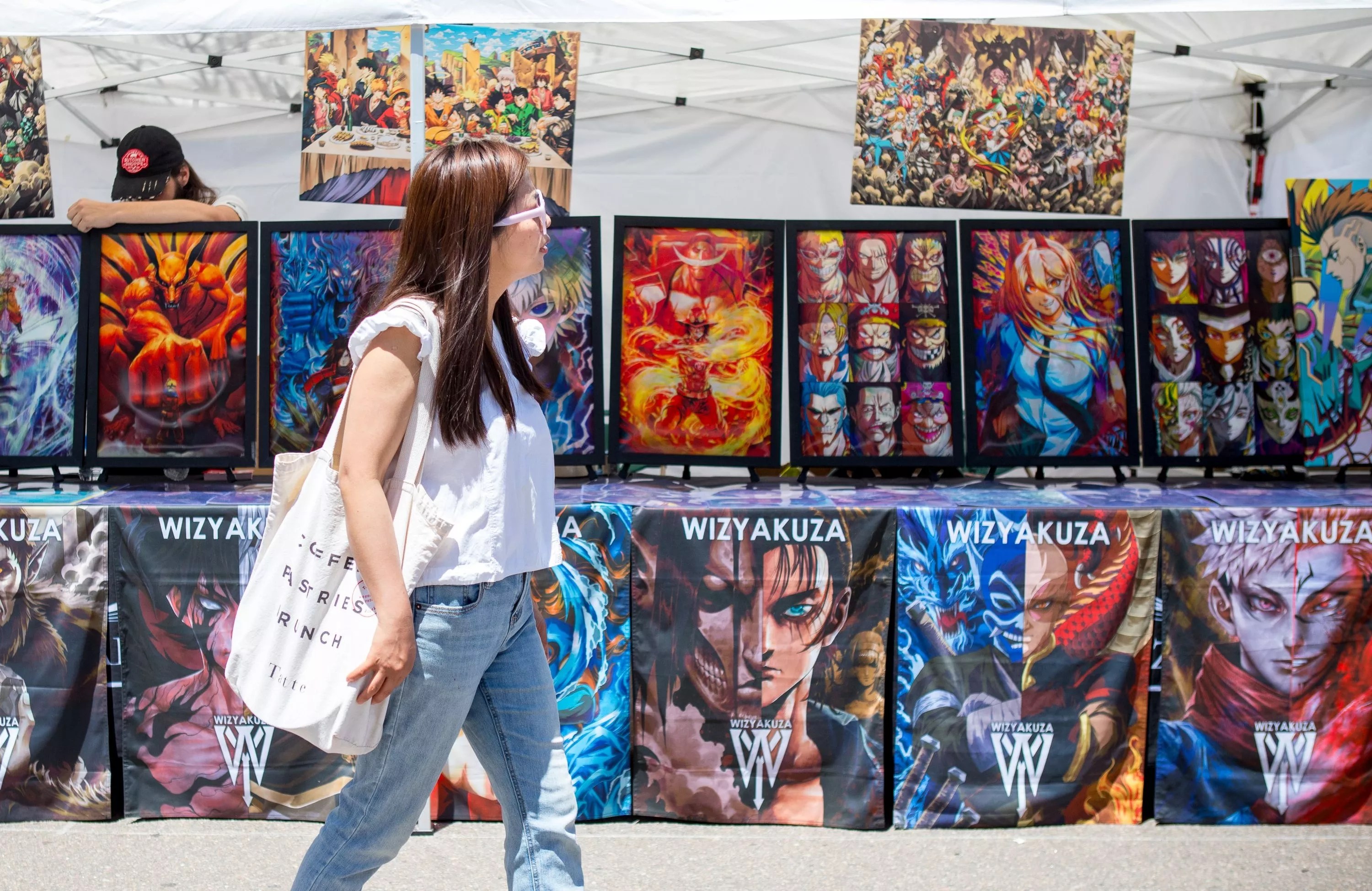
Cherry Blossom Denver

Audio By Carbonatix
Wendy Thompson remembers attending the Tri-State Denver Buddhist Temple‘s Cherry Blossom Festival as a Dharma School student decades ago, when she was tasked with bussing tables and serving hot tea inside the temple’s gym. Back then, the festival didn’t close down Lawrence Street for vendors and entertainment, as it will for its 51st iteration this weekend on June 21 and June 22.
The event celebrating Japanese food, art and culture brings an estimated 25-30,000 people to downtown’s Sakura Square, which serves as both a commercial development and a cultural hub for the Mile High City’s Japanese-American community. Denver’s Japanese-American community largely began moving into this part of downtown after World War II, opening small businesses in the area. In the early ’70s, with the aid of the Denver Urban Renewal Authority, the Tri-State Buddhist Church Apartments Inc. developed Sakura Square around an existing grocery store, temple and apartment building. The Cherry Blossom Festival officially began in 1974 as a simple food bazaar to raise money for the temple and to celebrate the construction of Tamai Tower before expanding in the ’90s, when the temple started closing Lawrence Street for vendors and entertainment.
The Cherry Blossom Festival, also known as Sakura Matsuri, really took off after 2016, when the temple partnered with the Sakura Foundation as organizers. “The foundation has a paid staff and we’re a 501c3, so we have opportunities for different types of funding,” explains Sakura Foundation executive director Stacey Shigaya.
According to Thompson, now the temple’s chairperson, the Sakura Foundation was able to do more advertising and gain sponsors, solidifying the festival as a popular summer event in Denver. The Cherry Blossom Festival is the temple’s main fundraiser.
This year, make your gift count –
Invest in local news that matters.
Our work is funded by readers like you who make voluntary gifts because they value our work and want to see it continue. Make a contribution today to help us reach our $50,000 goal!
The Cherry Blossom Festival used to be held in May, right after the trees bloomed along Cherry Creek, but Thompson says it was moved to June when it was combined for a period of time with Obon, another festival that typically takes place in July or August and is a celebration of ancestors. The joint event no longer exists, but the June date stuck. “People ask, ‘Why do you have your cherry blossom festival so late?'” Thompson notes. “That’s why.”
Maybe it’s too late for cherry blossoms, but these days, Denver is always blooming with people who want to celebrate Japanese culture. “It’s just a way for us to appreciate and cherish the culture we have, but also to share it with other people,” Shigaya says. “Nowadays, it’s more important than ever for people to build bridges of understanding so we can see that we’re really a lot more similar than we think we are.”

“A lot of times, when people hear about martial arts, they just think about some of the movies where it’s just a lot of punching and kicking and violence, and that’s not what a lot of martial arts is about. It’s very disciplined and graceful,” Shigaya says.
Andrea Dreskin
This year’s festival includes the traditional lineup of entertainment, food and vendors selling a variety of wares. The taiko drumming is usually a popular attraction because the music is both interesting to listen to and fun to watch, says Shigaya; she also highlights the martial arts demonstrations. “Judo is also called ‘the gentle way,'” she notes. “A lot of times, when people hear about martial arts, they just think about some of the movies where it’s just a lot of punching and kicking and violence, and that’s not what a lot of martial arts is about. It’s very disciplined and graceful and interesting.”
Meanwhile, the temple will be serving up its traditional teriyaki chicken bento, teriyaki beef bowls, sushi and more. It is also bringing back onigirazu, a handheld sushi snack that had a successful debut last year, and adding takoyaki to the menu. Takoyaki is a popular Japanese street food made of battered balls filled with diced octopus.
The festival will also be celebrating the 65th anniversary of Denver and Takayama as sister cities. “There will be some representatives from Takayama who will be at the festival, and there will be a larger display than we normally have,” Shigaya says, adding that the display will be in the Sakura Central room on the first level of Tamai Tower.
Reverend Diana Thompson will also hold lectures and answer questions about Buddhism and the temple during both days of the festival.

There will be plenty of vendors at the Cherry Blossom Festival.
Andrea Dreskin
Denver’s interest in the festival has grown as Japanese culture and items imported from the country gain more visibility in pop culture, Shigaya says. But she also sees people who come back every year. “They want to have the food again, see performances and visit the marketplace,” she adds. “That’s very rewarding.”
It’s also rewarding when the festival gives people a better understanding of Japanese and Japanese-American culture.
“Because those are two different things sometimes,” Shigaya says. “Obviously, everything is rooted in Japanese culture, but because we’re in America, and we’re Japanese Americans, there’s a different twist on things.” She points to Spam musubi as an example, saying that the use of Spam makes the snack like the American version of sushi.
Spam musubi is one of the popular items on the temple’s menu during the festival, but people sometimes come in and say, “That’s not true Japanese food,” Thompson says. “And it’s not. It’s Japanese-American food. It’s not traditional Japanese food, but it’s tried-and-true recipes that we have done and made all these years.”
If people want to try a more traditional Japanese food, they should opt for the manju, as temple members put a lot of time and effort into making it the traditional way. “All the ladies from the temple come in and make that,” she says. “We do it the Friday before the festival.”
From the temple’s perspective, the festival hasn’t changed that much over the years. “The layout in the gym is almost exactly the same, and some of the food items are similar,” Thompson says. The biggest change has been handling the increased volume of people, which has forced the temple to start using technology. “Last year was the first time we ever had a QR code for our menu. Up until like three or four years ago, we didn’t even take credit cards,” she laughs.
Shigaya hopes the Cherry Blossom Festival inspires people to read a book, look something up online or even visit Japan. She also hopes it emboldens people to look into their own backgrounds and find joy in those food dishes, entertainment and traditions. “When we see how those differences are actually similarities,” she says, “it brings us closer together.”
The 51st Cherry Blossom Festival is on Saturday, June 21, and Sunday, June 22, at Sakura Square, 1950 Larimer Street. Admission is free; learn more at cherryblossomdenver.org.